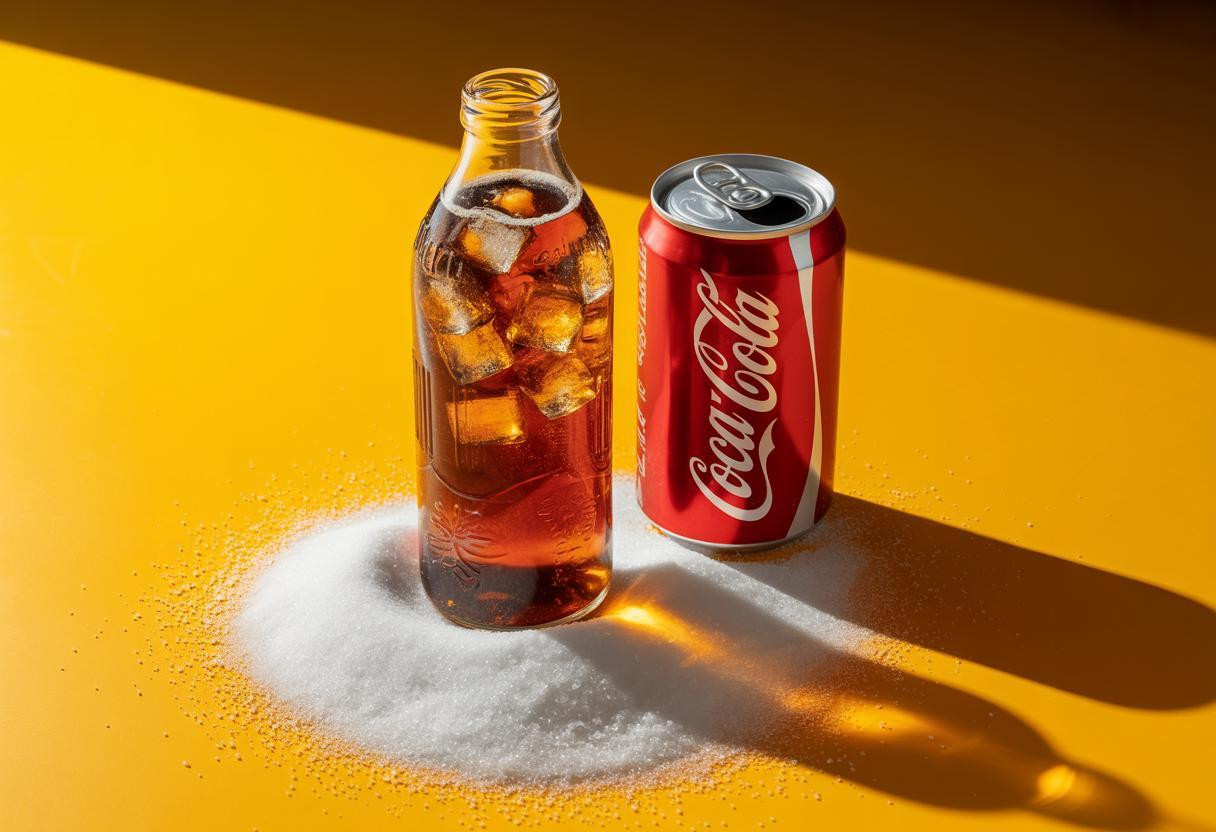That innocent-looking bottle of iced tea sitting in your refrigerator might be packing more sugar than a can of Coca-Cola—and most health-conscious consumers have no idea they’re being deceived by clever marketing tactics that position these beverages as “healthier” alternatives to soda.
A shocking reality check reveals that a 20-ounce bottle of popular branded iced tea contains nearly 60 grams of sugar, while a 12-ounce Coke has 39 grams. When you calculate sugar per ounce, some iced teas actually exceed soda’s sugar concentration, delivering up to 3 grams of sugar per fluid ounce compared to traditional sodas.
The deceptive marketing behind bottled tea’s sugar explosion
The bottled iced tea industry emerged by capitalizing on tea’s reputation for antioxidants and natural health benefits. However, manufacturers discovered that tea’s inherent bitterness required substantial sugar additions to create mass market appeal.
Major brands like Snapple Peach Tea pack 40 grams of sugar into a 16-ounce bottle—that’s equivalent to consuming 10 teaspoons of pure sugar. Arizona Iced Tea varieties often contain even more, with some 23-ounce cans delivering a staggering 69 grams of sugar.
The psychological manipulation runs deeper than simple taste preferences. Companies deliberately position their products near healthier beverages in stores, use earthy packaging colors, and emphasize “natural” ingredients while burying sugar content in fine print nutritional labels.
Why your brain craves these sugar-loaded beverages
The bitterness-sweetness manipulation cycle
Tea contains natural compounds called polyphenols and caffeine that create bitter flavors. Manufacturers counteract this bitterness with precise sugar formulations that trigger reward pathways in your brain, creating a more addictive product than plain tea.
This biochemical engineering explains why homemade iced tea with minimal sugar often tastes “flat” compared to commercial versions. Your taste buds have been conditioned to expect intense sweetness that masks tea’s natural complexity.
The energy illusion factor
The combination of caffeine and sugar creates a perceived energy boost that consumers associate with productivity and alertness. This reinforces consumption patterns, particularly among professionals who view sweetened iced tea as a “guilt-free” afternoon pick-me-up compared to energy drinks or coffee shop beverages.
Research shows that people underestimate liquid calories by up to 40%, making it easier to consume excessive sugar without realizing the metabolic impact. This cognitive blind spot particularly affects older adults who may be dealing with hidden diabetes symptoms that affect older adults without connecting their beverage choices to health complications.
The hidden health consequences most people ignore
A single bottle of sweetened iced tea can exceed the American Heart Association’s recommended daily sugar intake for women (25 grams) by more than double. This excessive consumption contributes to metabolic disorders that particularly impact seniors, similar to how other everyday products create health risks that particularly affect seniors through seemingly harmless exposure.
The dental impact alone is staggering—the combination of sugar and acid in flavored teas creates an ideal environment for enamel erosion. Many people sip these beverages throughout the day, creating constant acid attacks on tooth surfaces that surpass the damage from drinking soda quickly.
Smart strategies to break the bottled tea sugar trap
Read labels like a detective
Look for sugar content per serving, not per bottle. Many companies list nutrition facts for unrealistic portion sizes—a 20-ounce bottle might show stats for a 8-ounce serving, requiring you to multiply by 2.5 for accurate sugar calculation.
Choose unsweetened alternatives strategically
Brands like Tejava and Pure Leaf offer genuinely unsweetened options with zero added sugars. These products allow you to control sweetness by adding small amounts of honey or stevia according to your taste preferences.
Consider making your own iced tea concentrate at home—brew strong tea, refrigerate, and dilute with water. This approach gives you complete control over sugar content while maintaining the convenience of grab-and-go beverages.
The surprising truth about beverage marketing deception
The bottled iced tea industry’s sugar crisis reveals how consumers can be misled by health-focused marketing while consuming products that rival candy bars in sugar content. Understanding these tactics empowers you to make informed choices that align with your actual health goals rather than marketing promises.
Next time you reach for that “healthy” bottled tea, remember: the sugar content might shock you more than the caffeine ever could.
